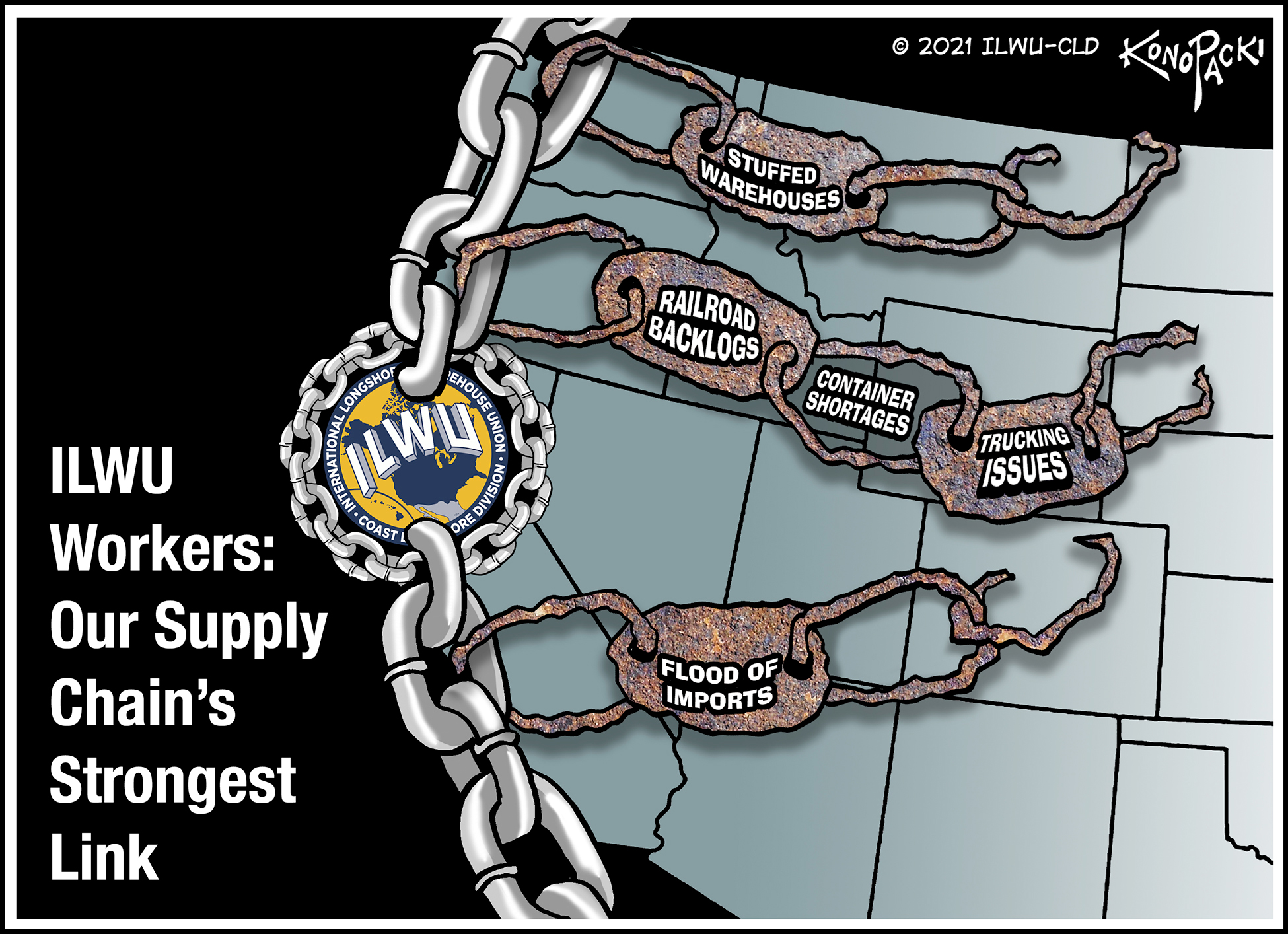
Media FAQ
Think you already know about the ILWU Coast Longshore Division? You might be surprised.
For more information, email media@ILWU.org
How many Longshore workers are there on the U.S. West Coast?
The Coast Longshore Division is the division of the International Longshore and Warehouse Union that represents dockworkers at the 29 ports on the West Coast of the United States, in California, Oregon and Washington. As of July 2024, that includes approximately 23,569 men and women, classified as follows: 11,969 fully registered “A” workers; 3,496 limited registered “B” workers, and 8,104 casuals.
What is Longshore work like?
Longshore work is physically demanding and dangerous because of the large machinery used to move cargo. The work is also casual by nature, meaning that there is no guarantee of work on any given day, and it can take years to move up the ranks and have access to full time work when it is available. Longshore workers are a diverse group of men and women who work hard on the docks and are active in their communities, with a strong culture of charitable giving. Many Longshore workers are multigenerational, coming from families with a long and proud tradition of working on the docks. The term “Longshore” was first recorded in the early 1800s and means “along the shore.”
How many Longshore workers are there on the U.S. West Coast?
The ILWU Coast Longshore Division represents dockworkers at the 29 ports on the West Coast of the United States, in California, Oregon and Washington. As of July 2024, that includes approximately 23,569 men and women.
What is Longshore work like?
Longshore work is physically demanding and dangerous because of the large machinery used to move cargo. The work is also casual by nature, meaning that there is no guarantee of work on any given day, and it can take years to move up the ranks and have access to full time work when it is available. Longshore workers are a diverse group of men and women who work hard on the docks and are active in their communities, with a strong culture of charitable giving.
Where did the term “Longshore” come from?
The term “Longshore” was first recorded in the early 1800s and means “along the shore”.
How much cargo do Longshore workers move annually?
As U.S. manufacturers rely more heavily on overseas production from Asia, the cargo coming into our West Coast ports has steadily grown. Today, approximately 40 percent of US imports come through our western seaboard. In 2023, more than 22 million TEUs were moved at West Coast ports. Volumes surged to an unprecedented 26 million in 2021 during the height of the pandemic.
How much do Longshore workers earn?
The only accurate way to discuss Longshore wages is to cite hourly pay, which in our current collective bargaining agreement starts at $54.85 per hour for casuals and increases with experience, skill and hazard level. Given the casual nature of work, Longshore workers are vulnerable to fluctuations in the economy and shipping factors that are beyond their control. Many Longshore workers, especially casuals, can only obtain sufficient hours to equate to part time work.
Our employers calculate the “average” wage of Longshore workers by calculating the average of only the fully registered “A” workers who have, in most cases, been working in the industry for decades and have the greatest access to jobs. Their calculation excludes the 49% of the Longshore workforce that has not yet reached “A” status. Since the employers’ incomplete picture leaves nearly half of the Longshore workforce out of their calculation, the “average” wage the employers cite is inaccurate and inflated.
